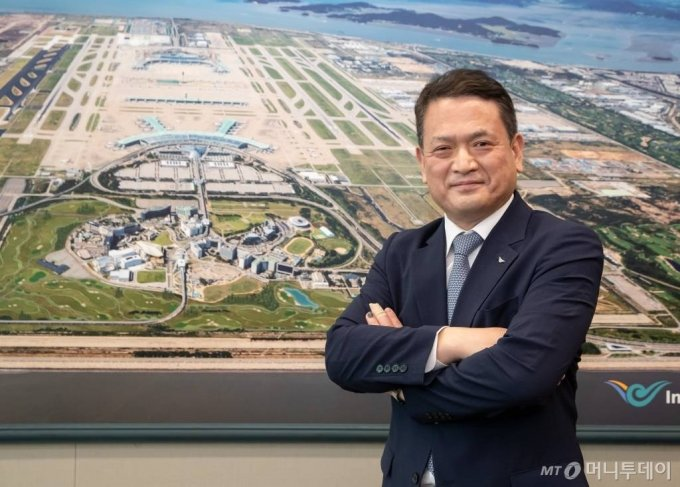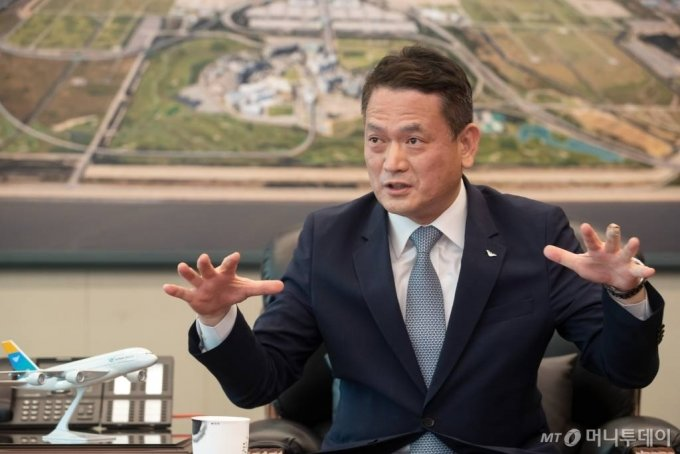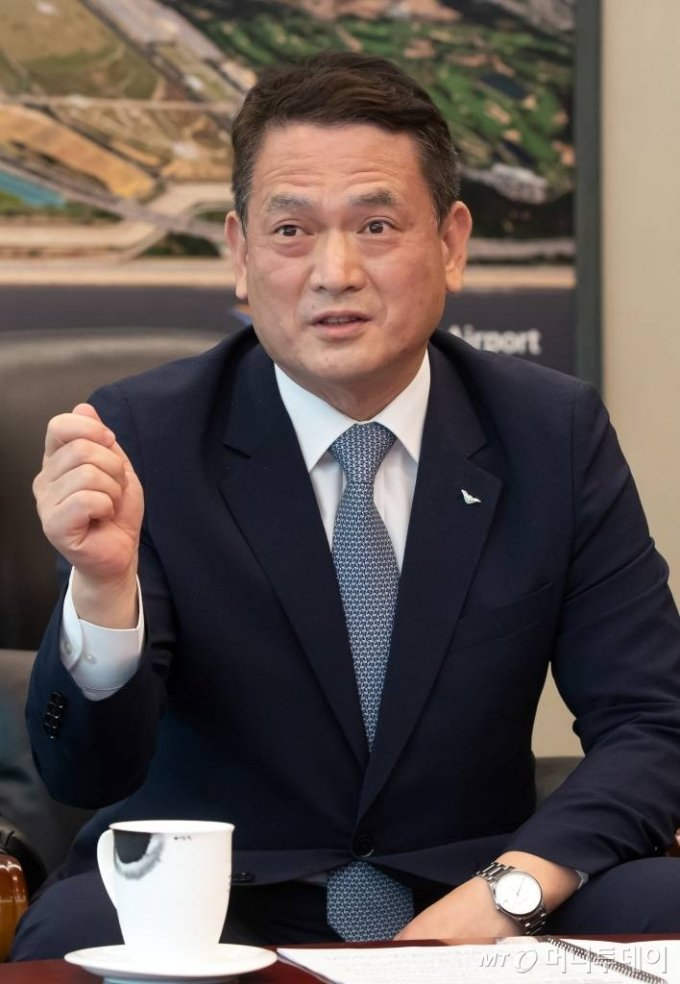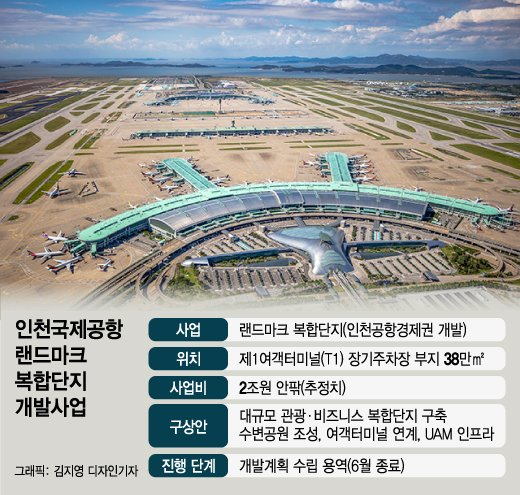Post-Corona, the opportunity to become the #1 Northeast Asia Hub Airport
- ARSHEXA MASTER
- Jul 11, 2023
- 7 min read
Updated: Jul 14, 2023
2022-06-13 by MONET TODAY
Kim Gyeong-wook, CEO of Incheon International Airport
"Post-Corona, the opportunity to become the #1 Northeast Asia Hub Airport"

Incheon International Airport unlocked all the restrictions due to COVID-19 in 2 years and 2 months. President Kim Kyung-wook, who is entering his 2nd year at Incheon Airport, heralded the great transformation of Incheon Airport. President Kim believes the "post-corona" period will be a new opportunity for Incheon Airport to establish itself as the No. 1 hub airport in Northeast Asia.
However, the regulations on the operation of aircraft have been lifted, due to the worst time in the past 2 years, and many problems need to be crossed in and out of regular operation. The deficit that has accumulated as customers plummet to 1/10th, the restoration of interrupted routes, and the resumption of duty-free store operations are the challenges for now. Internally, the conflict of employees who have been affected by the "national crisis" in the process of switching from irregular to full-time employment must also be healed.
In time for the post-coronavirus period, a strategy was also put in place to increase the airport's competitiveness. It is promoting the development of a large-scale economic project centered on the airport. "All airports around the world are now resuming operations," said Kim Kyung-wook, president of Incheon Airport "and if we don't become competitive on a different level than before, it will be difficult for us to survive the competition.
Money Today met with President Kim Kyung-wook at the Incheon International Airport Building in Incheon City on June 7th. Following is a question-and-answer with President Kim.
- International flights, which had been restricted from May 8th, have been lifted entirely. Are the preparations for the normalization of airport operations finished?
▶Even if aviation regulations such as flight numbers and time limits have been lifted entirely, it will still take time to fully normalize. From the airline's route application to the
government's flight permit to the sale of tickets, the actual aircraft expansion process alone takes about 2-4 weeks. The airport's main facility operating rate is also planned to expand up to 70% by October this year and 100% by the end of this year by the pace of passenger recovery. However, the shortage of personnel needed by airlines, quarantines, customs, etc. must also be addressed. Airlines and relevant agencies need to expand their ground-handling personnel, which can be difficult to recover in a short period.
- Is the number of customers per year not returning to pre-corona levels?
▶Before the coronavirus, the daily passengers at Incheon Airport were around 200,000. I think it is difficult to fully recover this year. The maximum is around 140,000 people, which is 70% of before coronavirus. The recovery of the number of passengers is up to the traveling partner country. Even if we are normalized, we cannot help but impose restrictions on the other country. We have to see how the restrictions in China and Japan used to make up 30% of the passengers.

- Is Incheon airport behind other airports in other countries?
▶It is time for airports around the world to resume original operations. Airports in the U.S. and Europe have already reopened operations before the coronavirus, and airports in the Middle East have resumed operations at 70% levels. Asia has a relatively slow recovery. Singapore, the first to resume operations, is around 40%. On the positive side, among competitors at Northeast Asian hub airports such as South Korea, China, and Japan, Incheon Airport is the first one to reopen. While Incheon Airport is at the level of 20%, Japan has a difference in recovery rate of about 5%. It could be an opportunity to overcome airport demand in China and Japan.
- The business situation has not been good for the past two years. How about this year? ▶ Over the past two years, it has suffered a cumulative deficit of 1.2 trillion won. A deficit of around 450 billion won is expected this year. Since the cumulative deficit until last month has already exceeded 200 billion won, it is difficult to expect a turnaround right away. However, the deficit has decreased to one-third compared to last year, and every month, the company will likely pass the break-even point and return to a monthly surplus around the end of the year.
-What do you think Corona left to the airport business? ▶ Until now, the core elements of airports have been safety and security. After Corona, the addition of quarantine is a big change. Safety, security, and quarantine have become key competitive factors. Perceptions have also changed from a business perspective. I am convinced that the current business structure centered on non-airline profits such as duty-free shops is difficult to sustain.
- Incheon International Airport's duty-free shop was a 'goose that lays golden eggs'. Why do you find it difficult to sustain? ▶Incheon Airport had a business structure of 'making good money' before COVID-19. The rapid growth of the duty-free business was effective. In the early days, Japanese tourists were at the center, and later, domestic tourists increased, and a large number of Chinese people came in. At one time, non-airline revenues such as duty-free shops accounted for 60-70%. The environment has changed rapidly over the past few years, with travelers being cut off due to the corona and China fostering its duty-free shops. The proportion of downtown duty-free shops and online duty-free shops has also increased. I don't think the days when airport duty-free shops are profitable like before the corona will come again. It is time to fundamentally change the business direction in the mid-to-long term.
-What is the new business direction? ▶ Basically, it is a plan to break away from the profit structure that was focused on non-airline profits such as duty-free shops and increase the portion of aviation profits such as facility usage fees for airlines. Until now, Incheon International Airport has been setting facility usage fees that are 20 to 40 percent lower than competing airports. It was a strategy that encouraged several national airlines to operate routes by advocating price competitiveness. In the future, the value of the airport should be raised so that it can attract airlines while receiving a similar level of usage fee as competing airports.
-Do you have any specific plans to increase the value of the airport? ▶The airport economic zone development project centered on Incheon International Airport is being pursued. Incheon International Airport will be created as a complex cultural space equipped with shopping, business, and entertainment functions, expanding the concept of an airport from a 'place to pass through' to a 'place to stay' to create new demand for aviation. It is also a way to build an ecosystem for airport-related industries such as logistics, aviation maintenance, tourism, and business by utilizing the area around the airport.
-What are the airport economic zone development projects? ▶ A typical example is the art storage project scheduled to be released in the second half of 2026. Art storage with a total floor area of 94,644 square meters is being developed with an investment of approximately KRW 379.5 billion. Currently, it is negotiating a detailed agreement with Ars Hexa, the preferred negotiator. A concession agreement will be signed this month, and design and construction will begin. When the storage is completed, it plans to expand beyond a simple art storage space into an infrastructure that serves as the foundation for art exhibitions, auctions, and distribution. We expect new demand to come to Incheon Airport to see the best artworks and exhibitions.

-Are you saying that you are visiting Korea to come to Incheon International Airport? ▶Yes. They come to enjoy the airport infrastructure itself, going beyond the functions and roles of traditional airports. It is the core of the airport economic zone development project in connection with the surrounding area. Currently, a plan to build a 380,000-square-meter long-term parking lot in Terminal 1 into a large-scale landmark complex is also being reviewed. Currently, it is in the stage of service for establishing a development plan. In addition, the Yeongjong Island Inspire Complex Resort, which is a Korean version of 'Las Vegas', is scheduled to be completed next year. - The aviation maintenance infrastructure project is also being promoted. ▶ This is also an axis of the airport-related industry ecosystem. The aircraft parts maintenance (MRO) business is expected to sign main contracts with IAI in Israel and Atlas Airlines in the US in the second half of this year. In 2024, it will be equipped with a high-tech air complex capable of inspecting all aircraft, including passenger and cargo planes that landed at Incheon Airport, as well as repairing and replacing parts. -Which stage is the 4th stage construction project, such as the new runway? ▶The target completion rate for this year is 58.7%. In 2024, when the fourth-phase construction project for Incheon International Airport, which involves expanding the second passenger terminal and constructing a new runway, is completed, the capacity to handle aircraft operations will increase from 500,000 to 600,000 per year and international passengers from 77 million to 106 million. It is the largest air infrastructure in Northeast Asia. - What about the air logistics sector besides passengers? ▶ Over the past two years, international flights have plunged by 67% and international passengers by 96%. Last year, it recorded an annual cargo volume of 3.33 million tons, ranking second in the world in international air cargo rankings. However, to grow into the world's No. 1 logistics hub, it is necessary to secure additional large-scale logistics complexes. - In the past, you went through a fairness controversy in the process of converting to a full-time position. What changes have occurred in the current recruitment policy? ▶Conflicts and wounds among the members of the internal organization were great due to a series of incidents regardless of the right or wrong direction. It is still an ongoing issue and it will take a long time for everything to heal. New recruitment is an issue that must be continued separately from the conversion to full-time positions. Based on the standard of 5th-grade general positions, the scale of recruitment is to be maintained at 40 to 50 people, similar to the pre-coronavirus (50 to 60 people). In particular, this year, it was decided to minimize the document screening factors such as language scores and licenses, which incited excessive spec competition. I plan to make sure that there is no case where I do not even get the opportunity to apply because I am eliminated from the document screening. Instead, it plans to strengthen competency-based recruitment policies based on the National Competency Standards (NCS).


